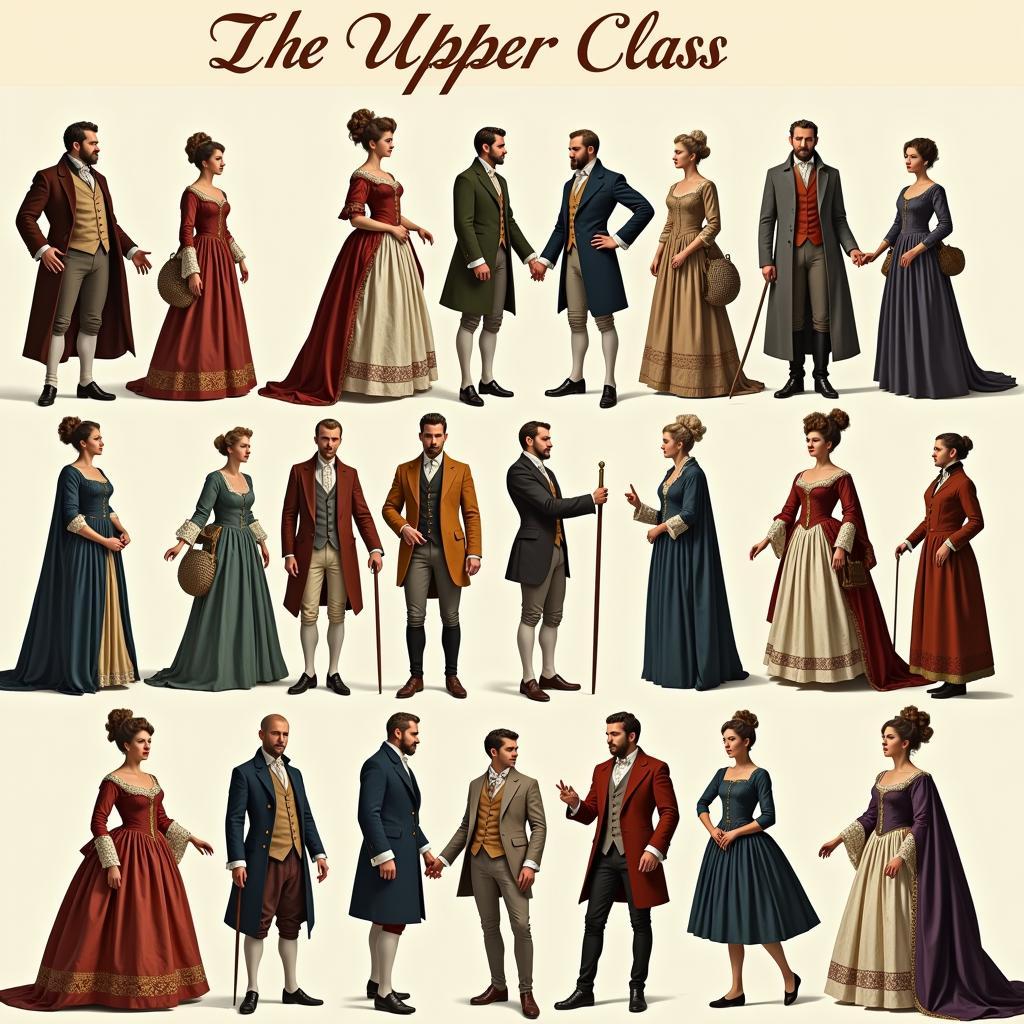The Upper Crust Of Society, a term often laden with both fascination and disdain, represents a small percentage of the population holding significant wealth, power, and social influence. This article explores the complexities of this social stratum, examining its historical roots, present-day manifestations, and the implications for a world striving for peace and equality.  Historical Context of the Upper Crust
Historical Context of the Upper Crust
Defining the Upper Crust: More Than Just Wealth
While wealth is undeniably a key factor, the upper crust of society is defined by more than just financial capital. It encompasses a complex interplay of social connections, cultural capital, and often inherited privilege. These individuals often wield considerable influence in various spheres, from politics and business to the arts and philanthropy. Understanding the multifaceted nature of this group is crucial to comprehending its impact on broader society.
What constitutes “upper crust” varies across cultures and time periods. Historically, it was often associated with land ownership and aristocratic titles. Today, it may encompass individuals who have achieved significant wealth through entrepreneurial ventures, high-level corporate positions, or inheritance. This evolution reflects the changing dynamics of power and influence in the modern world. another word for high class society can help broaden the understanding of this societal group.
The Impact of Privilege: Examining Inequality
One of the key criticisms leveled against the upper crust is the inherent inequality it perpetuates. Access to exclusive education, healthcare, and social networks creates a system where opportunities are not evenly distributed. This can lead to social stratification and limited mobility for those outside this privileged circle.
How does this disparity impact our pursuit of peace? Inequality breeds resentment and can be a major source of conflict. When opportunities are limited based on social standing, it creates an environment ripe for social unrest. Bridging the gap between the upper crust and the rest of society is essential for building a more just and peaceful world. Understanding another word for high society allows us to engage in a more nuanced discussion on this issue.
Bridging the Divide: Fostering Dialogue and Understanding
The existence of an upper crust is not inherently negative. Many individuals within this group contribute positively to society through philanthropy, innovation, and job creation. However, it is essential to address the systemic issues that perpetuate inequality and limit opportunities for others.
Promoting Social Mobility and Equitable Access
One crucial step is to promote social mobility through education and economic empowerment. Creating pathways for individuals from all backgrounds to access quality education and economic opportunities can help level the playing field. This requires a concerted effort from governments, businesses, and civil society organizations. Exploring books about new york high society can provide valuable insights into these complexities.
“Addressing inequality isn’t about tearing down those at the top, but about lifting everyone up,” explains Dr. Anya Sharma, a sociologist specializing in social stratification. “We need to create a system where success is determined by merit and hard work, not by the circumstances of one’s birth.”
Fostering Empathy and Understanding
 Bridging the Divide Between Social Classes
Bridging the Divide Between Social Classes
Another key element is fostering empathy and understanding between different segments of society. This involves breaking down stereotypes and promoting dialogue. When we understand each other’s perspectives, we can begin to address the root causes of inequality and build a more inclusive society. Resources like high society 2010 tv series can spark conversations about social class.
“True peace requires us to see beyond the labels and recognize our shared humanity,” says Dr. David Chen, a conflict resolution specialist. “Building bridges of understanding is essential for creating a world where everyone feels valued and respected.” Knowing where was high society filmed might offer some context into the portrayal of the upper crust.
Conclusion: Striving for a More Just and Peaceful World
The existence of the upper crust of society presents both challenges and opportunities. While acknowledging the inherent inequalities it perpetuates, we must also recognize the potential for positive contributions from this segment of the population. By fostering dialogue, promoting social mobility, and working towards a more equitable distribution of resources, we can strive for a world where everyone has the opportunity to thrive, regardless of their social standing. The upper crust, like all parts of society, has a role to play in building this more just and peaceful future.
When needing support, contact Phone Number: 02043854663, Email: [email protected] Or visit address: Khu 34, Bac Giang, 260000, Vietnam. We have a 24/7 customer support team.